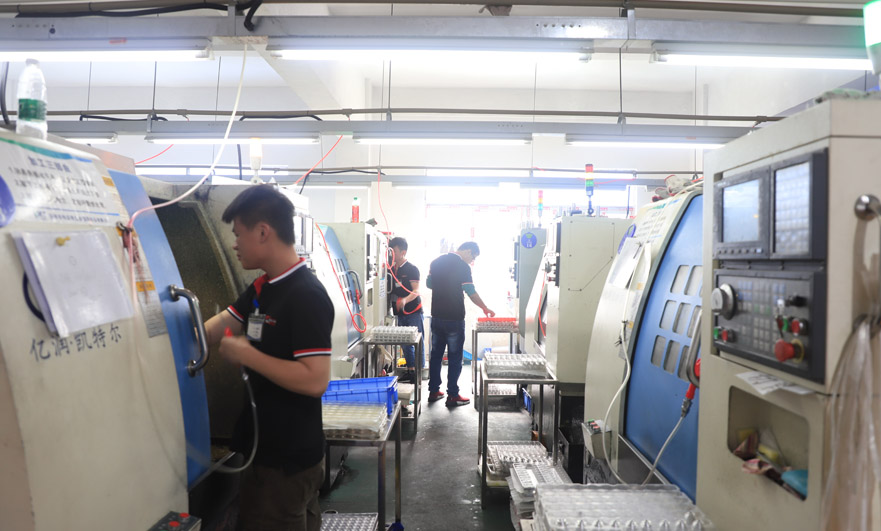15 years one-stop China custom CNC machining parts factory

Hey there I’m VMT Sam!
With 25 years of CNC machining experience we are committed to helping clients overcome 10000 complex part-processing challenges all to contribute to a better life through intelligent manufacturing. Contact us now
 98 |
Published by VMT at Sep 02 2021
98 |
Published by VMT at Sep 02 2021
Traditional machining is an operation for the purpose of removing excess material layers from customized CNC machining parts. This is a subtractive machining process. Make customized CNC machining parts processed into customer-specific shape and size and precision finishing.
When customizing CNC machining, we always consider the depth of cutting, which directly affects whether the customized CNC machining parts meet the expected standards on the customer's drawings. In this issue, we will take you to understand what depth of cut is from the three aspects of cutting speed, depth of cut and feed rate.
What is the Cutting Speed (Vc)?
The cutting speed we usually say is generally based on-(m/min) meters/minute as the calculation unit, and the professional term is expressed by Vc. Cutting speed is also the most important parameter of cutting. Cutting speed is the instantaneous speed of a certain point on the cutting edge of the tool relative to the surface to be machined in the main direction of motion, which provides forced motion for cutting operations. A rotating object will get a tangential velocity at any point on the custom CNC machined part away from its axis of rotation (on the axis, the velocity is zero).
What is the Depth of Cut?
The width of the metal layer cut from the customized CNC machining part during the CNC machining process refers to the depth of cut. The method of calculating the cutting depth is calculated by using the vertical distance between the uncut surface and the machined surface of a custom CNC machined part, measured in inches or millimeters (mm).

What is the Feed Rate (s)?
The feed rate is the supportive cutting motion provided by the feed speed, the ultimate goal of which is to remove the unwanted material layer from the surface of the custom CNC machined part. It is an important parameter that promotes the working movement of the cutting tool relative to the material. It can customize CNC machining parts or cutting equipment by moving, which can help cover the entire area of ??the workpiece. Therefore, the surface of customized CNC machined parts is processed smoothly.
Selection and value of cutting depth
The best range will be selected due to factors.
Usually the value of the depth of cut varies between 0.1 and 1.0 mm. Value selection requires attention to certain characteristics, as shown below:
Machine tool capability: Since the depth of cut increases the cutting force with vibration, the potential of the machine tool must also be considered.
Machining operations: Several types of machining operations can handle different ranges of cutting depths. For example, in CNC milling, face milling cutters and side milling cutters can handle large cutting depths. However, the value of the depth of cut is limited or very small in the knurling operation.
Material strength of custom CNC machined parts: In order to machine custom CNC machined parts that are strong and easy to crack, it is recommended to use a lower depth of cut value. Otherwise, the increase in cutting force may damage the cutting tool and cause breakage.
Cutting quality requirements: To customize the smooth cutting of CNC machined parts, the depth of cut must be reduced. On the contrary, to obtain rough cutting, increase the depth of cut to reduce machining time.
Productivity requirements: Since the material removal rate is calculated by multiplying these three parameters (cutting speed, feed rate and cutting depth), a higher cutting depth value will increase the material removal rate. This also reduces processing time and improves processing productivity.
The Effect of Cutting Depth
If the cutting depth is large, it may cause the tool to break, which should be avoided.
In addition, the depth of cut value also affects the thickness of the chip, the deformation, the type of chip generated, etc., and the machining effect of these factors and indicates its machinability.
If the cutting depth is greater, select a greater material removal rate. The reason is that the material removal rate is directly proportional to the cutting speed, feed rate and depth of cut.
Therefore, the machining productivity can be improved through a larger cutting depth, thereby reducing the machining cost.
The cutting force is based on the chip load and is proportional to the depth of cut. Therefore, the greater the cutting depth, the greater the cutting force, which affects the performance of the CNC machining machine and generates vibration.
Summarize
This article briefly explains about custom CNC machining depth of cut, related parameters, and other value selection strategies used to initiate cutting. If you are a beginner and don't know much about the topic of cutting depth, then the article in this issue will be helpful to you. Thank you for reading, and you are welcome to consult or start your new project.
Ready To Start Your Next Project?
Get Instant Quote

Request a Free Quote
Send us a message if you have any questions or request a quote. We will get back to you ASAP!